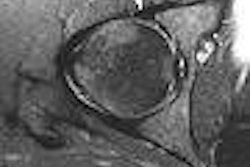Supracondylar humerus fractures occur quite frequently in children, and this traumatic break is usually treated with cross-pinning of the displacement after reduction. The technique involves one pin being inserted at the lateral epicondyle and another pin being inserted at the medial epicondyle.
However, iatrogenic ulnar nerve injury is a potentially significant complication. Turkish researchers used two radiographic parameters to assess the connection between pin insertion and nerve damage.
"The possible causes of iatrogenic ulnar nerve injury have been reported to be direct penetration of the nerve or its sheath by the medial pin," wrote Dr. Hakan Ömeroğlu and colleagues from the department of orthopedics and traumatology at Osmangazi University in Eskişehir (Journal of Pediatric Orthopaedics, January 2006, Vol. 15:1, pp. 58-61).
For this study, clinical and radiographic records were retrospectively reviewed for 90 patients with an average age of 6.1 years. The patients had to have complete pre- and postoperative clinical records, as well as one set of anteroposterior (AP) and lateral postop x-rays. In these images, the medial and lateral pins could not overlap, the authors stated.
Co-author Dr. Abdurraham Özçelik assessed the x-rays using two criteria. The frontal humerus pin angle (FHPA) was measured between the long axis of the humerus shaft and the axis of the medial pin on an AP x-ray. The saggital humerus pin angle (SHPA) was measured between the long axis of the humerus shaft and the axis of the medial pin on a lateral radiography.
The results showed that all of the fractures reunited within six months of treatment. Iatrogenic ulnar nerve injury was observed in 18 cases. The authors found a significant difference in the mean SHPA between those with nerve damage and those without, the authors stated.
"Among 18 cases with iatrogenic ulnar nerve injury, 16 of them (89%) had anteroposterior insertion direction of the medial pin," they wrote. "On the other hand, among 72 cases without iatrogenic ulnar nerve injury, 36 of them (50%) had anteroposterior insertion direction of the medial pin."
A significant difference was also found between the mean angle of the saggital humerus pin in those with ulnar nerve injury (12°) and those without complications (16°). The authors concluded that AP insertion of the medial pin in the saggital plane, while the elbow was in hyperflexion, correlated with iatrogenic ulnar nerve injury.
Instead, they recommended that fixation be achieved with lateral-entry divergent or crossing pins. "We have been using two lateral-entry divergent or cross pins for fixation following closed or open reduction since January 2004," they explained. "Besides this, we have performed all such surgical interventions under the strict supervision of experience surgeons. These two preventative measures have currently brought the rate of iatrogenic ulnar nerve injury to zero in our department."
Other research supports the Turkish group's method. For example, orthopedic surgeons at the Hospital for Special Surgery in New York City found that the incidence of ulnar nerve injury was particularly low when crossed pin placement was employed for unstable supracondylar humerus fractures.
In study's 65 patients, there were no ulnar nerve motor injuries based on radiographic evidence of healing, leading them to conclude that "crossed-pin fixation can be performed safely and reliably" (Journal of Orthopaedic Trauma, March 2005, Vol. 19:3: pp. 158-163).
By Shalmali Pal
AuntMinnie.com staff writer
January 27, 2006
Related Reading
MRI can't replace x-ray for pediatric growth plate injuries, December 1, 2005
Osteopath proselytizes for musculoskeletal US, November 11, 2004
Weightlifter's elbow: Myth or missed diagnosis? August 19, 2004
Copyright © 2006 AuntMinnie.com



















